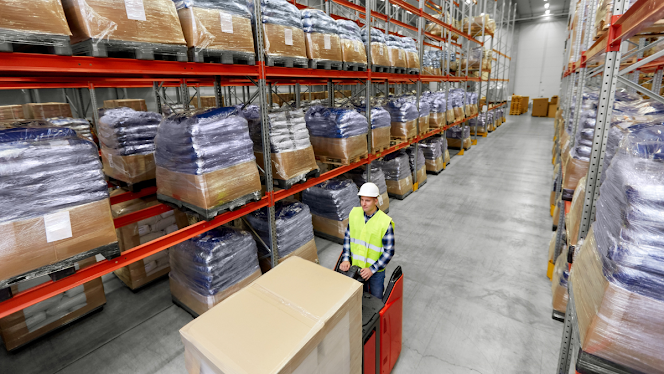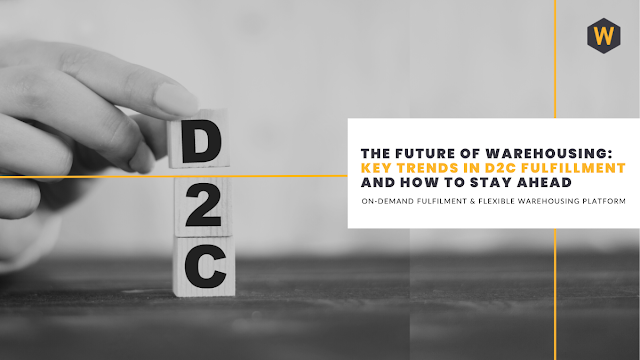What is a Dark Store in Retail? Exploring the Concept, Advantages, and Future Trends
In the rapidly evolving world of retail, new concepts and strategies are constantly emerging to meet the demands of consumers. One such innovation that has gained significant traction in recent years is the concept of a "Dark Store." In this article, we will explore the concept of a Dark Store, its operational model, advantages, challenges, and its role in the future of retail.
Introduction
With the rise of e-commerce and the increasing expectations of consumers for faster and more convenient shopping experiences, traditional retail models have faced significant disruptions. Dark Stores have emerged as a response to these changing dynamics, providing a solution combining physical retail's benefits with the efficiency of online shopping.
Definition of a Dark Store
A Dark Store, also known as a "Virtual Store" or "Fulfillment Center," is a retail facility that operates exclusively for order fulfillment rather than direct customer interaction. Unlike traditional brick-and-mortar stores, Dark Stores are not designed to attract walk-in customers but instead focus on efficiently picking, packing, and delivering online orders.
How Dark Stores Operate
Order Fulfillment
Dark Stores are optimized for order fulfilment operations. They have efficient warehouse management systems and inventory tracking technologies to ensure accurate and timely order processing. Products are organized based on categories, making it easier for staff to locate items quickly. Dark Stores often use automated picking systems and advanced robotics to expedite picking.
Inventory Management
Inventory management is a critical aspect of Dark Store operations. Accurate stock tracking and real-time updates ensure availability and prevent overstocking or stockouts. Dark Stores utilises advanced inventory management software and data analytics to optimize inventory levels and minimize waste.
Staffing
Dark Stores typically have a specialized workforce trained in efficient order fulfilment processes. Staff members are responsible for picking, packing, quality control, and shipping. They work collaboratively with the help of technology-driven systems to ensure orders are processed accurately and efficiently.
Advantages of Dark Stores
Increased Efficiency
Dark Stores offer higher efficiency compared to traditional retail stores. Since they are dedicated to fulfilling online orders, they can focus on streamlining the order fulfilment process without disrupting in-store customer interactions. This leads to faster order processing, reduced waiting times, and improved operational efficiency.
Faster Delivery
With Dark Stores, retailers can significantly reduce the delivery time for online orders. By strategically locating Dark Stores closer to densely populated areas, retailers can ensure faster delivery and meet the growing demand for quick turnaround times.
Enhanced Customer Experience
Dark Stores play a crucial role in enhancing the customer experience in the online shopping journey. With dedicated facilities for order fulfilment, retailers can maintain high product quality and packaging standards. Additionally, Dark Stores allow for more accurate order tracking and provide customers with real-time updates on their purchases, contributing to a more satisfying shopping experience.
Dark Stores vs. Traditional Retail Stores
While Dark Stores share similarities with traditional retail stores, key differences exist in their layout, customer interaction, and impact on the local community.
Differences in Layout and Design
Dark Stores are optimized for efficient order fulfilment, whereas traditional retail stores prioritize visual merchandising and creating an immersive shopping experience. Dark Stores often have high ceilings, open spaces, and specialized storage systems to accommodate a large volume of inventory. On the other hand, traditional stores focus on creating visually appealing displays and organizing products for easy browsing.
Customer Interaction
Dark Stores lack the traditional face-to-face customer interaction commonly found in brick-and-mortar stores. While this may be a disadvantage, it allows Dark Stores to allocate more resources to order processing, leading to faster and more accurate deliveries. However, some consumers still prefer the personal touch and assistance traditional retail stores provide.
Local Community Impact
Traditional retail stores contribute to the local community by providing employment opportunities and serving as gathering places. On the other hand, Dark Stores have a reduced impact on the local community regarding job creation, as they require a smaller workforce focused on order fulfilment rather than customer service. However, Dark Stores can still contribute to the local economy through partnerships with local delivery services and suppliers.
Dark Stores and the Rise of E-commerce
The rise of d2c e-commerce fulfilment has played a significant role in the emergence and success of Dark Stores. As more consumers turn to online shopping, retailers need efficient order fulfilment solutions to meet the increasing demand. Dark Stores provide a dedicated space for handling online orders, allowing retailers to scale their e-commerce operations effectively.
Examples of Successful Dark Store Models
Dark Stores have found success in various retail sectors, including online grocery delivery, fashion and apparel, and electronics and technology.
Online Grocery Delivery
Grocery retailers have embraced the Dark Store concept to cater to the growing demand for online grocery shopping. Dark Stores equipped with temperature-controlled storage areas and specialized picking systems ensure the freshness and quality of perishable goods. Retailers partner with delivery services or develop their own logistics networks to provide seamless and timely delivery of groceries.
Fashion and Apparel
Fashion retailers have also adopted the Dark Store model to streamline online order fulfilment processes. By centralizing inventory and dedicating specific facilities to order processing, retailers can efficiently handle the high volume of fashion and apparel orders. Dark Stores allow for faster order processing, reducing the time between purchase and delivery for fashion-conscious consumers.
Electronics and Technology
Dark Stores have succeeded in the electronics and technology sector, where customers often seek quick product delivery. Retailers can offer same-day or next-day delivery for electronics and technology products by strategically locating Dark Stores near major urban centres. This improves customer satisfaction and creates a competitive edge in the market.
Challenges and Limitations of Dark Stores
While Dark Stores offer numerous advantages, they also face challenges and limitations that retailers must address.
High Initial Investment
Setting up a Dark Store requires a significant initial investment. Retailers must invest in infrastructure, technology, inventory management systems, and hiring specialized staff. The costs of leasing or building a dedicated facility can be substantial, especially for smaller retailers.
Limited Product Visibility
One limitation of Dark Stores is the limited visibility of products. Unlike traditional retail stores, where customers can physically browse and interact with products, Dark Stores rely on online product descriptions and images. Retailers must invest in high-quality product photography and detailed descriptions to compensate for the lack of in-person product experience.
Sustainability Concerns
The rapid growth of e-commerce and the operation of Dark Stores raise concerns about their environmental impact. Increased packaging materials, additional delivery vehicles on the road, and energy consumption in fulfilment centres contribute to carbon emissions. Retailers must prioritize sustainable practices by optimizing packaging, adopting eco-friendly delivery options, and implementing energy-efficient technologies to minimize their ecological footprint.
The Future of Dark Stores
As the retail landscape continues to evolve, Dark Stores are expected to play a vital role in meeting the demands of online shoppers. Here are some key aspects that will shape the future of Dark Stores:
Expansion and Adaptation
Dark Stores will likely expand in numbers and locations to serve a larger customer base. Retailers will continue to optimize their supply chain and fulfilment operations, exploring partnerships with third-party logistics providers to enhance their delivery capabilities further. Additionally, retailers may experiment with hybrid models that combine elements of Dark Stores and traditional retail stores to offer a seamless omnichannel experience.
Integration with Technology
Integrating advanced technologies such as artificial intelligence (AI), robotics, and automation will drive efficiency and accuracy in Dark Store operations. AI-powered inventory management systems can forecast demand, optimize stock levels, and improve order accuracy. Robotics and automation can further streamline the picking and packing processes, reducing human errors and increasing productivity.
Conclusion
Dark Stores have emerged as a strategic solution for retailers to meet the evolving needs of online shoppers. By focusing on efficient order fulfilment and leveraging technology, Dark Stores offer faster delivery, enhanced customer experiences, and increased operational efficiency. While they differ from traditional retail stores in terms of layout and customer interaction, Dark Stores complement the rise of e-commerce and serve as a crucial component of the retail ecosystem.
FAQs
FAQ 1: Are dark stores only used for online orders?
Dark Stores are primarily used for online orders but can also support other order fulfilment channels, such as click-and-collect or curbside pickup. Their main purpose is to optimize order processing efficiency and ensure timely delivery.
FAQ 2: Can dark stores coexist with traditional retail stores?
Yes, dark and traditional retail stores can coexist as part of an omnichannel retail strategy. Retailers can leverage dark stores for efficient order fulfilment while maintaining physical stores for in-person shopping experiences and customer interactions.
FAQ 3: How can dark stores improve the customer experience?
Dark stores improve the customer experience by offering faster delivery times, accurate order processing, and high product quality. With optimized operations and dedicated resources for order fulfilment, dark stores can provide online customers with a seamless and satisfying shopping experience.
FAQ 4: Will dark stores replace traditional retail stores entirely?
While dark stores have gained popularity, traditional retail stores will continue to have their place in the retail landscape. Physical stores offer unique experiences, human interactions, and the ability to examine products physically. Dark and traditional retail stores can coexist, catering to different customer preferences and shopping needs.
FAQ 5: What are some potential environmental impacts of dark stores?
Dark stores, like any retail operation, have environmental impacts such as increased packaging waste and carbon emissions from delivery vehicles. Retailers are increasingly adopting sustainable practices by optimizing packaging, utilizing eco-friendly delivery options, and implementing energy-efficient technologies to mitigate these environmental concerns.
Related Links:



Great post thanks for this Discover a world of wonder at MyFirsToys, your premier toy store. From educational toys to sensory play essentials, we offer a curated selection to ignite imaginations and foster early learning.
ReplyDelete